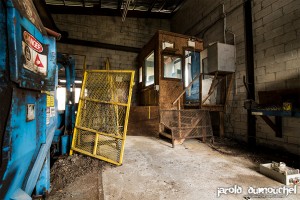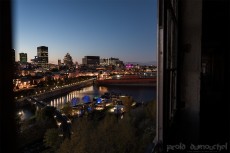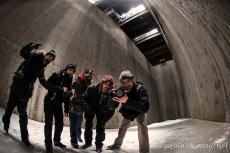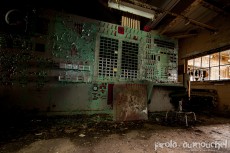A true emblem of the Old Port of Montreal, it is difficult to miss the Silo # 5, a gigantic concrete structure south of McGill Street. The complex consists of 206 silos and an amalgam of buildings built over a period of more than fifty years,...
The old abandoned sawmill
Ode to the industrial era of the 90s
The advantage of a 4 hours ride to visit an abandoned sawmill is that we increase our chances of finding an intact place without the slightest trace of vandalism. Or at least, very little.
All along the road, the fear of finding a barricaded building has began to gangrene our mind but the surprise was total at our arrival. The visit was possible and all the industrial equipment of this old factory were there.
It was a real ode to the industrial era of the 80s and 90s: an aluminum and concrete building like the thousand we see miles after miles near the highways. As the doors beat the measure with the wind, the swallows, which have invaded the place, enter and leave the main building at a rate that recalls the frantic pace of a anthill under attack.
For the rest, the factory is calm with the sound of our footsteps resonates on these trembling metal floors. A partial demolition seems to have stopped a while ago.
The history of the sawmill is difficult to relate. If there are articles reporting a short reopening in 2006, its final closure is difficult to establish. In spite of archeological digging here and there in order to learn a little more about these installations, very little information surfaced during my research. At most, I know that they were more than 130 employees at the peak of production in this distant mono-industrial municipality.
Inside, the most recent dates seen on the calendars date back to 2008.
For the rest, it is rather ironic to see nature regain its rights on this place by growing trees where once, these same trees were cut and transformed ...
Related content
Abandoned since December 1993, the former incinerator des Carrières, known as the incinerator # 3 is now partly used as a warehouse by the City of Montreal. It is also one of the few places where there have power in a portion of the building....
It takes a lot of motivation to get to this old mine and foundry abandoned since 2002. For it must be admitted that we are rather far from everything in this distant municipality of 650 inhabitants. Moreover, if this village exists, it is above...
The use of asbestos by man does not date from yesterday. Already, more than 2000 years ago, the Greeks used in making funeral clothes. Its name comes from its property to withstand fire: άσβεστος (asbestos, meaning "indestructible").
Its...































